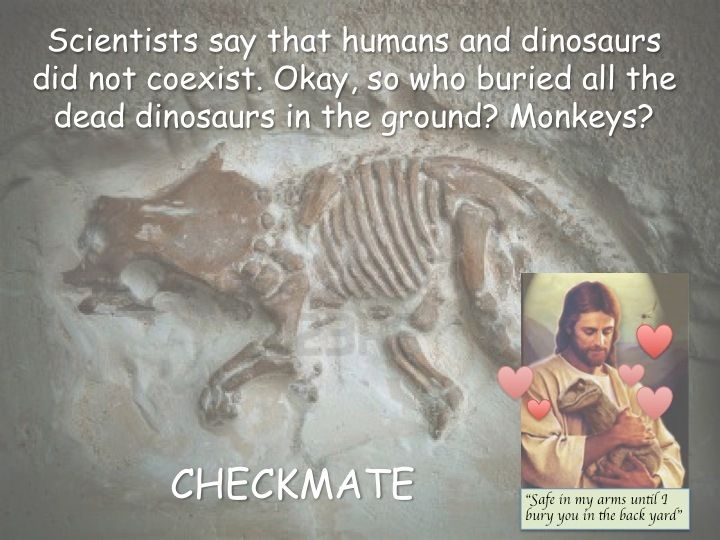Please see the following:
http://www.theologyonline.com/forums/sh ... hp?t=92131What Fossils can Actually Tell us about Catastrophic Geological Events - May 10th, 2013, 10:34 AM
--------------------------------------------------------------------------------
Lots of generalizations can be made about fossils.
(1) Fossils don't come with a date.
But they do come to exist and form in a physical location.
Vertical location can help place the deposit of a fossil in temporal order,
although it cannot actually date the fossil. The layer in which it appears,
or the layers above and below, must be dated independently.
Horizontal Location can also help place a fossil in an ecological environment,
and associate it with other organisms, IF it was deposited in a gradually
accumulating layer, that functioned as a platform for an ecosystem over a
significant time.
In both cases, anomalies can affect the evaluation and/or validity
of conclusions about order, date, and environment.
Fossils can be intrusive, i.e., deposited in new locations by erosion and
migration, floods, glaciation, submersion, or bedrock faulting, buckling,
folding, and uplift, displacing their order relative to other deposits, and apparent age.
Organisms can be trapped and fossils formed in contexts that don't
represent their living habitats, because of catastrophic events, such as
floods, volcanoes, asteroids etc.
In any case, a fossil without a clear and unambiguous connection to
a location and context will be nearly worthless, except in the most
general and vague way, unless it can be dated, and/or its background
and context established by some other means.
A surprising amount of information can be gathered about a fossil,
even without a knowledge of its origin, however, especially in the
context of knowledge of current organisms, and the context of the
total knowledge of the world's fossil collections.
One of the saddest aspects of fossils presented to the public,
is the lack of information about their discovery and origin, and
the context in which they were found and the history of how they
became available for public examination.
Most fossils are not well documented as to how and where they were
discovered, what their geological surroundings were, and/or the
context of their origin. Typically, fossils are collected by amateurs
and vital information about their location is unknown.
(2) Fossils often give Immediate Clues about their Origin and Context.
This can be a 'lucky break' for investigators, because fossils are often
still embedded in a portion of their contexts, sometimes alongside other
objects that provide clues, or in a state that conveys information about
their creation and origin.
'Understanding Fossil Evidence'
No doubt about it, fossils are a fascinating, tangible glimpse into the past. They are like snapshots in time. How much time? That depends on your world view.
Concordia University professor Dr. Gary Locklair [gave a talk to] explore the topic. His presentation focused "on the different interpretive frameworks used by scientists in evaluating fossil evidence."
"Creationary and evolutionary scientists study the exact same evidence, the fossils, yet come to radically different conclusions about the origin of life on earth."
Differing conclusions were never more evident to me than while listening to the Park Ranger at Dinosaur National Monument last April:
He explained how 1 inch of sediment depth equaled X millions of years* in the Fossil Quarry, yet the huge fossilized dinosaur bones, entombed in the hill, were cemented in a span of sediment about 15-20 feet tall! Click for picture Some of the bones were random, others were from one animal, which points to some cataclysmic event.
In fact, at Fossil Butte National Monument, they even have a display case titled 'CATASTROPHE' to show that some sudden disaster accounted for these fish all dying at the same time.
It would also account for the sudden death of the fish, who never got to enjoy his dinner.
...
Creationists would say Noah's flood was the catastrophe.

